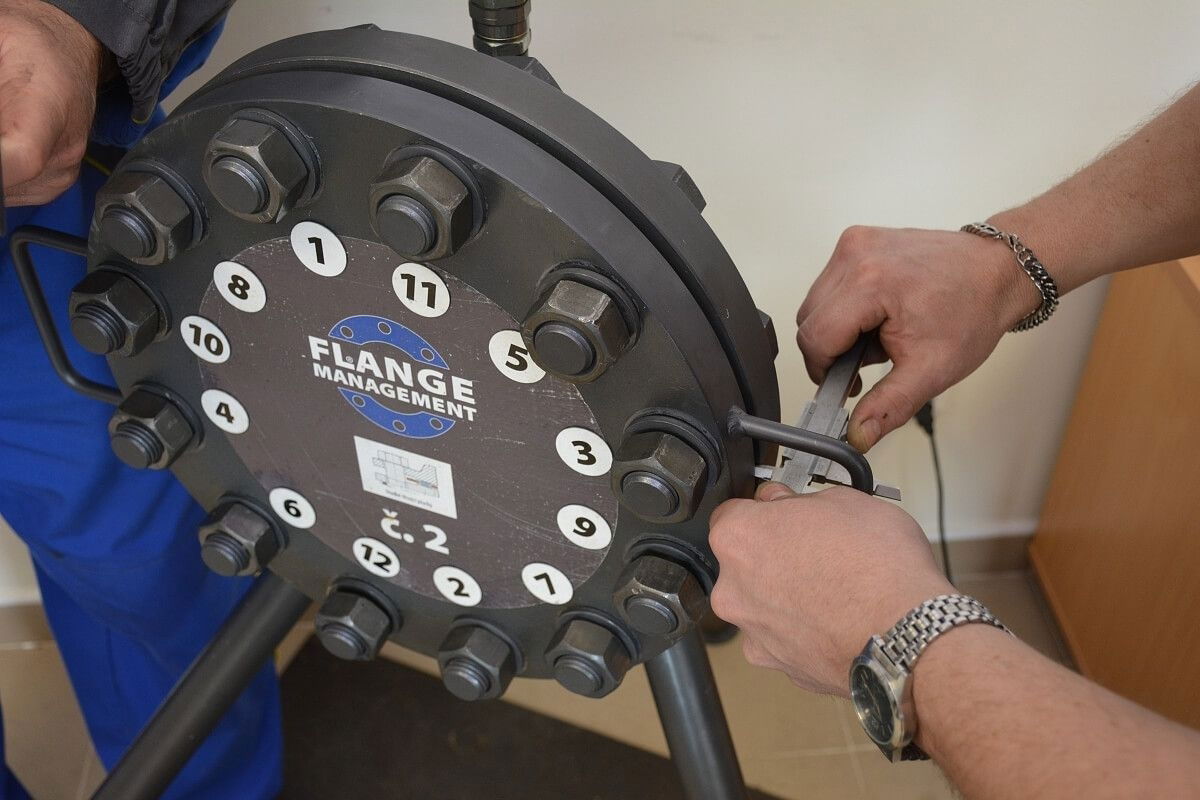.jpg?width=352&height=235&aspect_ratio=3:2)
Access to prices and online shopping
Overview of your purchased items
Contact your sales representative and clerk
Educational materials
News about industrial seals
Information on new products and services
Exclusive hints and tips
Fill in your contact details and we will get back to you as soon as possible.
We will call you at your chosen time and advise you on what you need.
Our sales and technical representative will come to your company for a personal consultation.

Having to shut down operations due to a leak at a flange joint is every plant operator's nightmare.
In refineries, chemical and other plants, the causes of flange joint leakage failure are investigated and investigated for a long time. The following table is the result of these investigations.
| Reasons for joint failure | ||
|---|---|---|
| Joint design | 10% | |
| Calculation | 15 % | |
| Improper sealing | 15% | |
| Technological error | 10 % | |
| Seal installation | 50 % |
The above shows that up to 50% of the causes of leaks are due to incorrect installation. This is often due to stereotyped procedures based on experience with asbestos seals.
The primary objective of EN 1591-4 training is to give installers a comprehensive understanding of how the different parts of a flange joint interact.
The basic qualification of EN 1591-4 contains 27 topics that can be divided into approximately 4 areas.
The aim is to elevate the work of the flange joint assembler to the level of the welder.
The actual training and final exams include both theoretical and practical parts. The validity of the training certificate is 5 years. Extension is possible on the basis of an examination or by passing the entire training again, see. EN 1591-4 chapter 12.2.
The most common arguments against the usefulness of this training that we encounter refer to long experience and established practices.
"We don't have critical connections, we are not a chemical plant or a refinery. We don't need training for our applications, our installers have always handled it, we've been doing it the same way for years, we don't have leaks, etc."
From an assembly perspective, it doesn't matter if it's a critical flange joint or a routine application. Even joints that have low parameters can be critical from an operational point of view.
The current state of standards for design and calculation of seals is based on standards that are over 30 years old and in some respects refer to asbestos seals. However, the newly used sealants that have replaced asbestos have completely different properties and therefore different installation procedures and methods need to be applied to them.
It is common practice to put the sealant, a striking wrench and a hammer of the appropriate size in the hands of the installer. There can be no question of tightening torques in these cases.
Thanks to their experience, the installers will be able to cope in the vast majority of cases. The flange joint will therefore eventually pass the pressure test. But is it tightened appropriately so that it can operate smoothly even at the operating parameters of the equipment?
"How to tighten a flange connection properly? Which gasket should I use with respect to the parameters of the joint? What tightening torque will I apply if I have not got any? What will I lubricate the fastener with and what effect will it have on the overall tightening?"
We will be happy to answer these and similar questions in the assembly training.
The procedure and testing of flange fitters according to ČSN EN 1591-4 is approved by an independent body in accordance with EN ISO/IEC 17024:2013 conformity assessment. In the Czech Republic the independent approval body is ČIA (Czech Institute for Accreditation) and in Slovakia SNAS (Slovak National Accreditation Service).
ČIA or SNAS, as the certification body, awards a mark with which the testing laboratory may stamp its own certificate issued to successful graduates of the training of installers according to EN 1591-4.
Our experience with this EN 1591-4 training has been used to develop the methodology, procedures and assessment criteria for testing external installers before the start of installation work (shutdown).
The importance of testing external fitters on their knowledge of basic flange joint assembly procedures provides operators with verification of their competence prior to assembly. Combined with the subsequent supervision of the actual assembly, it also increases the expected reliability of the flange connections.
© Pokorny industries s.r.o. 2025 - all rights reserved
Made by servisdesign
You don't know what to do?